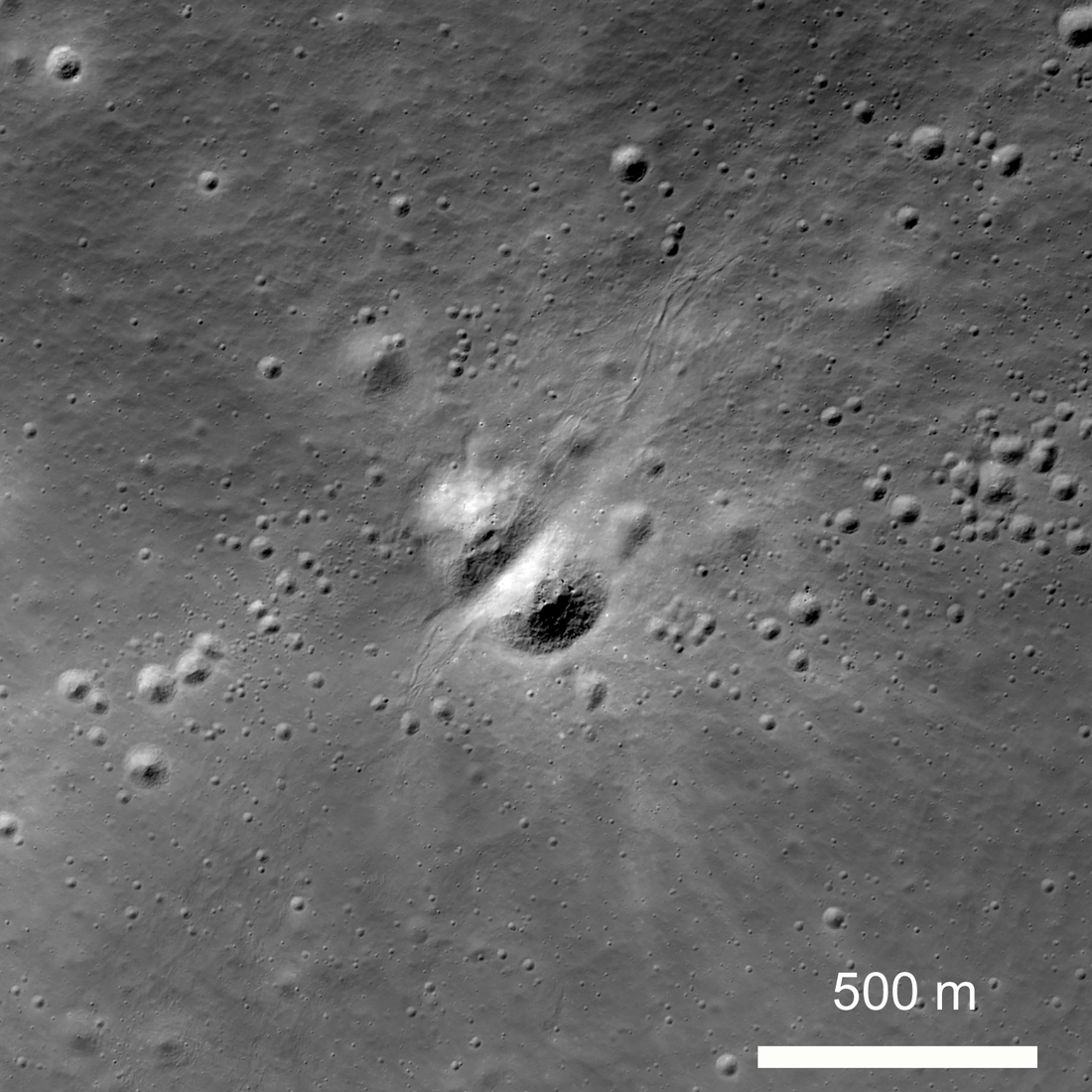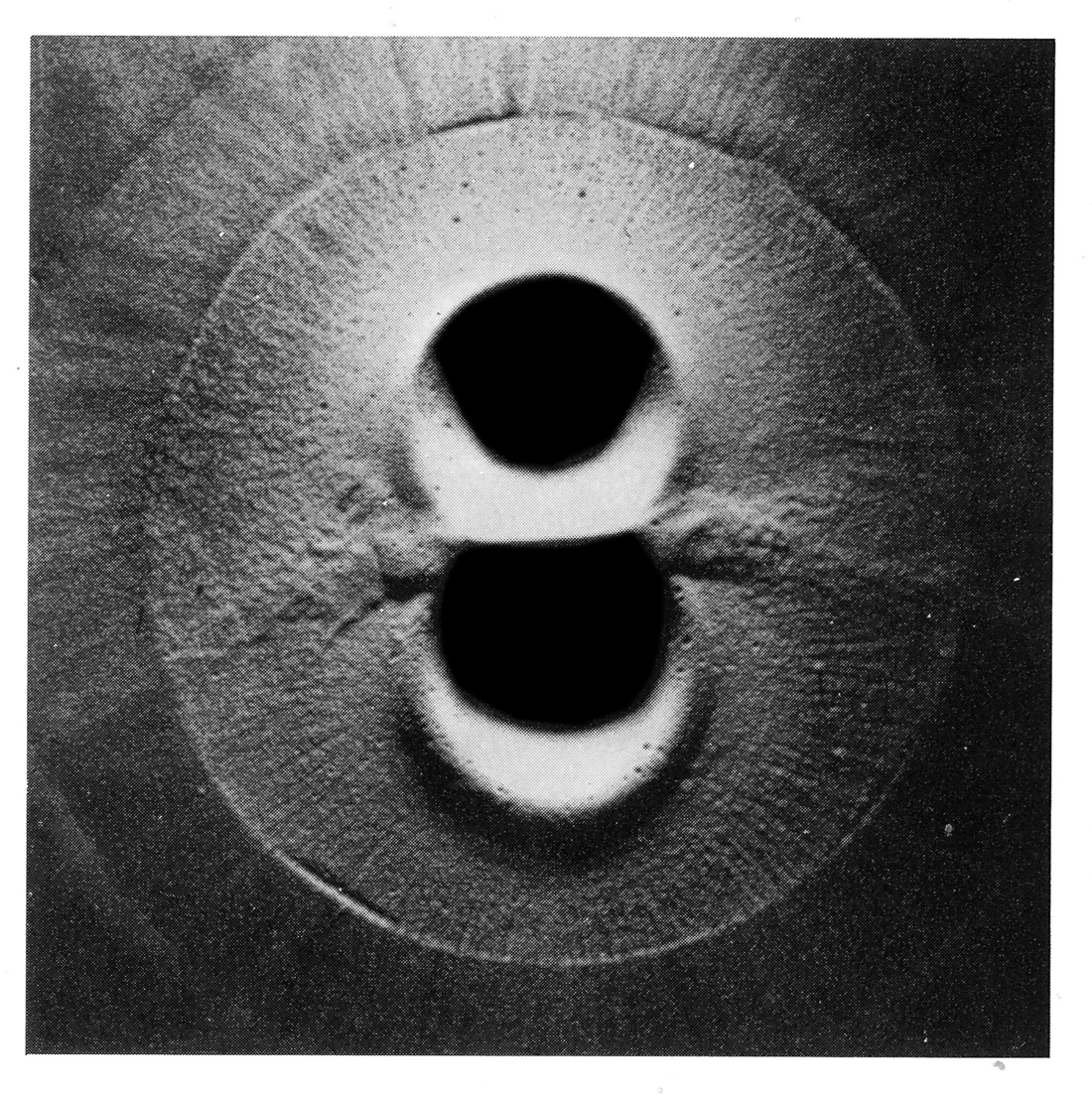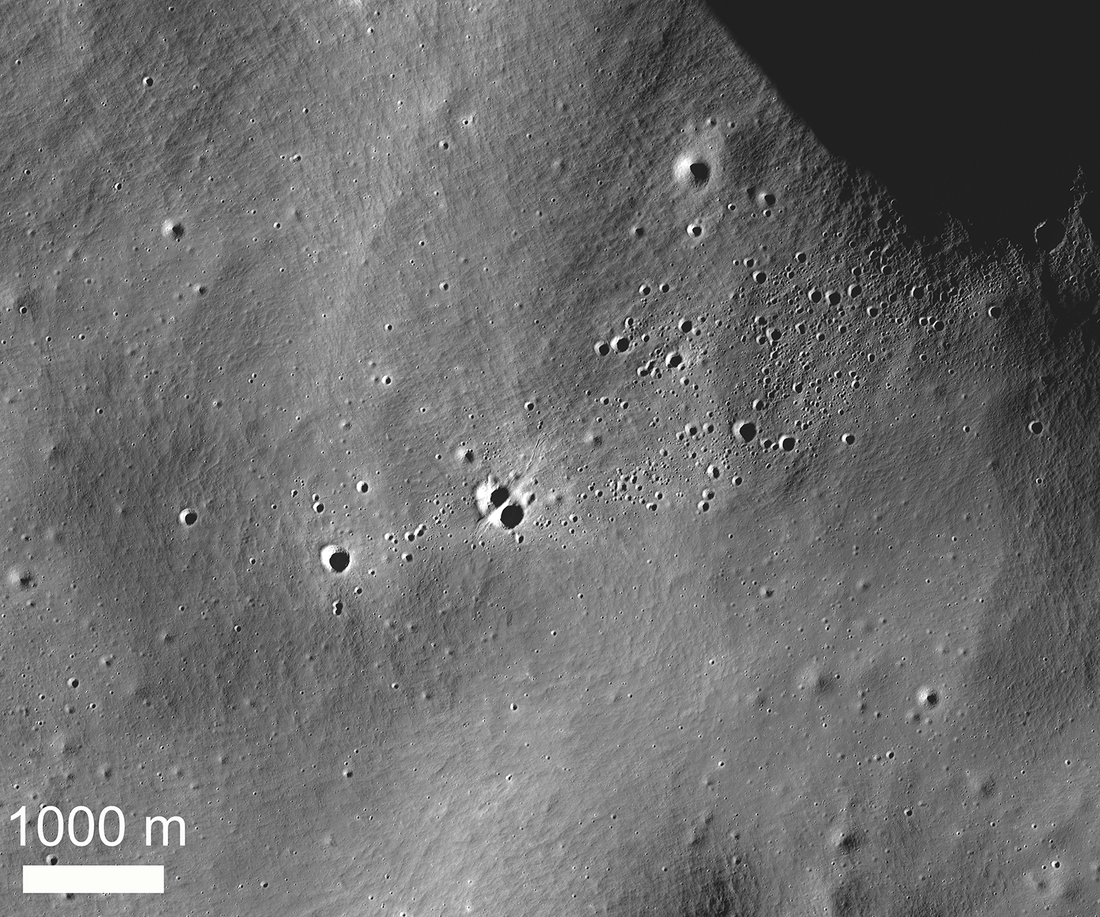
These two craters were formed by the simultaneous impact of two projectiles. Since there is no atmosphere on the Moon that could have broken a single projectile apart, we can surmise that these two bodies were traveling close together before they hit the surface. Where did they come from? As best we can tell, they were ejected from a nearby large impact event, thus these craters are know as secondary craters.

Each of the twin craters (49.038°, 129.017°) are about 235 meters across in the NE/SW direction; in the NW/SE direction, the northern crater is 172 meters across and the southern one is 212 meters across. These craters are not symmetric because the excavation shock waves interfered with each other, preventing uniform expansion of the crater. Meeting between the craters, the interfering shock waves resulted in the formation of a ridge of material (septum), rather than continued excavation which would have resulted in a circular crater. The rim of the southern crater is sharper, while the rim of the northern crater is somewhat subdued and broader; both craters are about 40–50 meters deep (measured from the rim).
The ridge between the crater extends from the craters both to the southwest and to the northeast; overall it is more than 1000 meters long. In both directions serpentine troughs, a few to about 20 meters wide, extend over a combined distance of 1000 meters. These troughs likely formed as material was ejected almost parallel to the surface gouging out the regolith (soil) upon making contact.
Only a few boulders are found around the rim of the twin craters, indicating that little to no bedrock (solid rock) was excavated. The fine rays extend radially away from the rims and can be traced up to 1.5 kilometers distant.

The conclusion that the twin craters formed as part of a single event, rather than two independent events at different times, is amply demonstrated by the absence of ejecta burying one of the craters (the first one formed would have been damaged by the second if they had formed at different times) and their morphology, specifically the septum. This distinct morphology has been shown to be due to simultaneous impacts through laboratory experiments at the NASA Ames Vertical Gun Range, where high-speed projectiles are fired into a target below to simulate impact cratering events at a smaller scale. The amazing similarity between the experimental craters produced by firing side-by side projectiles at a target surface and the "real thing" imaged by LROC on the Moon helps scientists to understand the intricate physics of impact cratering.
The twin craters are found within a field of secondary craters from Giordano Bruno crater. It appears that they formed when material ejected by Giordano Bruno struck the nearby surface, but since the twin craters are not themselves covered with small craters, they likely formed late in the cratering event. Two other examples of simultaneous twin craters occur to the northeast in the secondary field (not shown in these images).

Explore the area around these twin secondaries, M1118057143L,R [NASA/GSFC/Arizona State University].
Related Featured Images:
Secondary Scatter
Stream of Secondary Craters
First LROC Images!
Very Oblique View of Giordano Bruno
Published by Jeff Plescia on 18 August 2020